Bromeliad Houseplant Growing Tips Explain How To Make Yours Bloom

HOUSEPLANTS > BROMELIAD
Chris is a gardening writer and nature enthusiast. He graduated from Oxford Brookes University in 2022 with an MA in Psychology. Chris works with the Leeds Green Action Society, helping their food cooperative by growing various fruit and vegetables on their two allotments in Hyde Park, Leeds.
Reviewed By DAN ORI

Dan has over 27 years’ under his belt caring for plants and gardens. Working as a Horticultural Instructor and Consultant, he draws on a diverse range of experience that includes working as a Head Gardener, Tree Surgeon, Garden Centre Trouble Shooter, and writer of academic papers. Dan has a Level 3 Diploma in Horticulture and is currently a candidate for the RHS’s most prestigious award – The Master of Horticulture.
BROMELIAD GUIDES
There are many plants that call the family Bromeliaceae their home – including the pineapple!
Many of the plants in this family are also epiphytic, meaning they absorb water and nutrients from the air rather than the soil.
This is a really interesting trait, as it means bromeliads can grow on other plants without causing any harm or absorbing any of their nutrients as a parasitic plant would.1Bromeliads. (n.d.). Wisconsin Horticulture. Retrieved March 13, 2023, from https://hort.extension.wisc.edu/articles/bromeliads/
They can even grow on inanimate objects like rocks.
Overview
| Botanical Name | Bromeliaceae |
| Common Name(s) | Bromeliad / Air plant |
| Plant Type | Perennial Houseplant |
| Native Area | Central & South America, The Caribbean and West Africa |
| Hardiness Rating | Varies depending on cultivar |
| Foliage | Evergreen |
| Flowers | Varies |
| When To Plant | Any time (when sowing indoors) |
| When To Prune | Any time (varies with cultivar) |
Sunlight
Preferred
Partial Shade
Exposure
Sheltered
Size
Height
0.1 – 1M
Spread
0.1 – 0.5M
Bloom Time
Spring / Summer / Autumn
Soil
Preferred
Most fertile soils
Moisture
Moist but well-drained
pH
Any
While not all bromeliad cultivars lend themselves well to being houseplants, there are a few that will fit the bill.
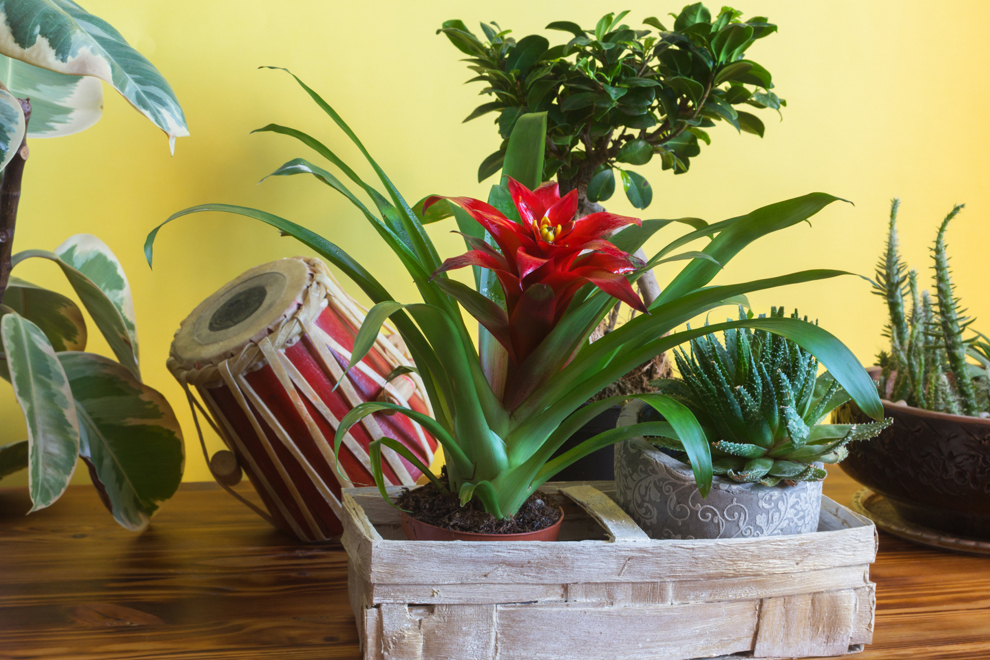
Just bear in mind that these plants only have a single reproductive cycle which means they’ll flower once and then die away.
The plus side is it’s a relatively long lifecycle, and they’ll produce ‘pups’ which you can replant for another go.
Bromeliad Care
Because we’ve recommended various types of bromeliad houseplants, the next section will be quite surface-level.
Obviously, each type of plant will have its own requirements, so check the specific cultivar(s) you’re working with to make sure it gets what it needs.
Light & Temperature
Bromeliads like a lot of light, but make sure it’s not direct as they can suffer scorching.
Aim for at least five hours of indirect sunlight each day.
A south or west-facing windowsill is preferred.
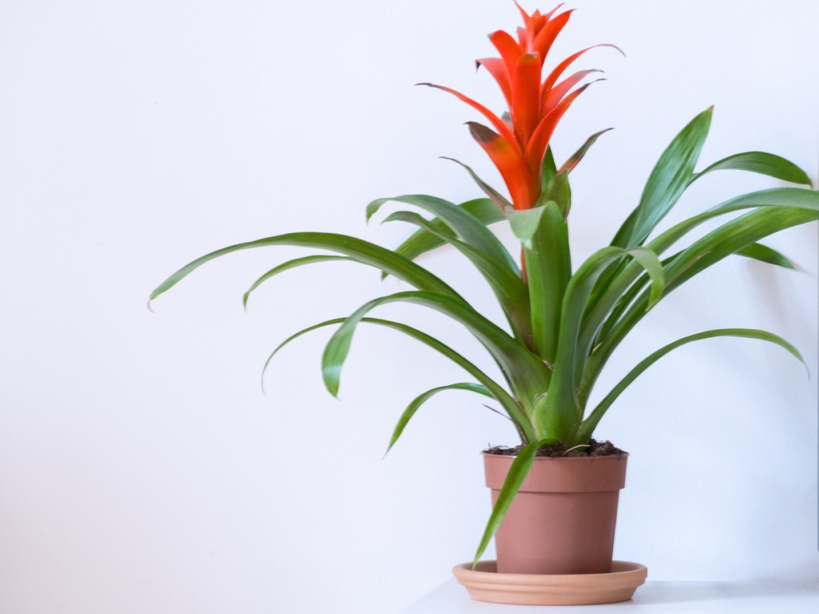
While bromeliads can bloom at any time, balmy indoor temperatures around 21°C will do more to encourage it.
Once bloomed, lower temperatures can encourage a longer bloom.
A rule of thumb for comfortable bromeliad temperature is 12-21°C.
Watering
These plants generally like to be watered about once a week, although again this will vary between varieties.
Check for soil dryness an inch or so below the surface – this is usually a good indicator that they’re thirsty.
Some varieties have a central reservoir that you can water.
Soil Requirements
Obviously, some bromeliads can grow as air plants, meaning they don’t need soil at all.
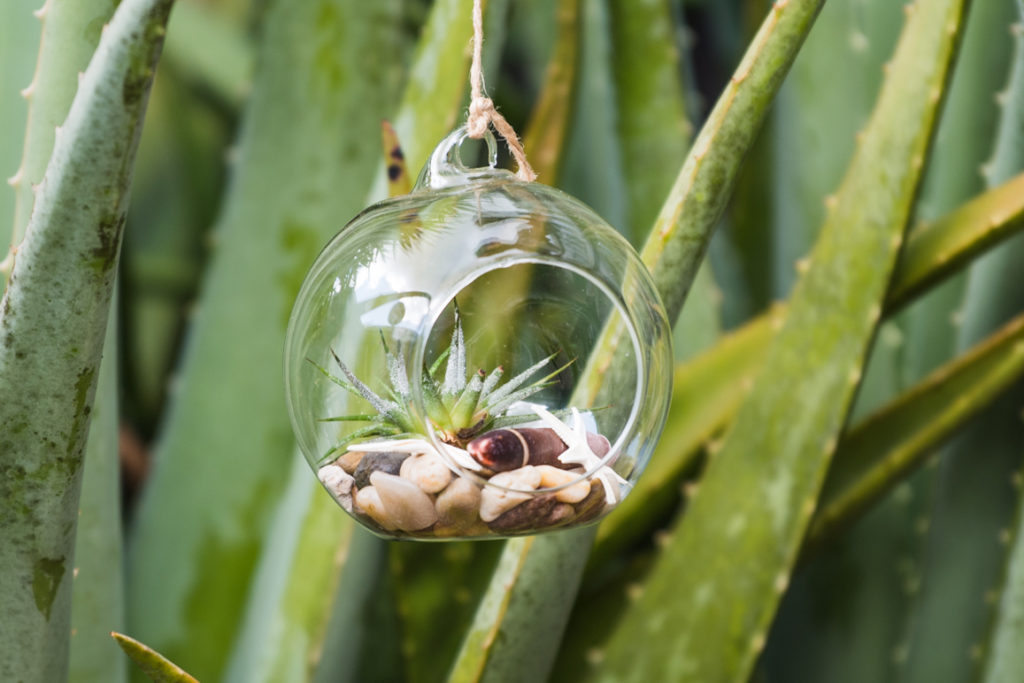
If your bromeliad isn’t an air plant, look for fast-draining potting soil.
Orchid mix is a good place to start, but make sure to check the specific needs of your variety.
Fertilising
Many bromeliads do just fine without fertiliser.
If you’re unsure, check the requirements for your variety.
Those varieties that do like a bit of extra food often do well with light, infrequent feedings.
Winter Care
These plants tend to go dormant in the winter, meaning they’ll grow slower and require less water.
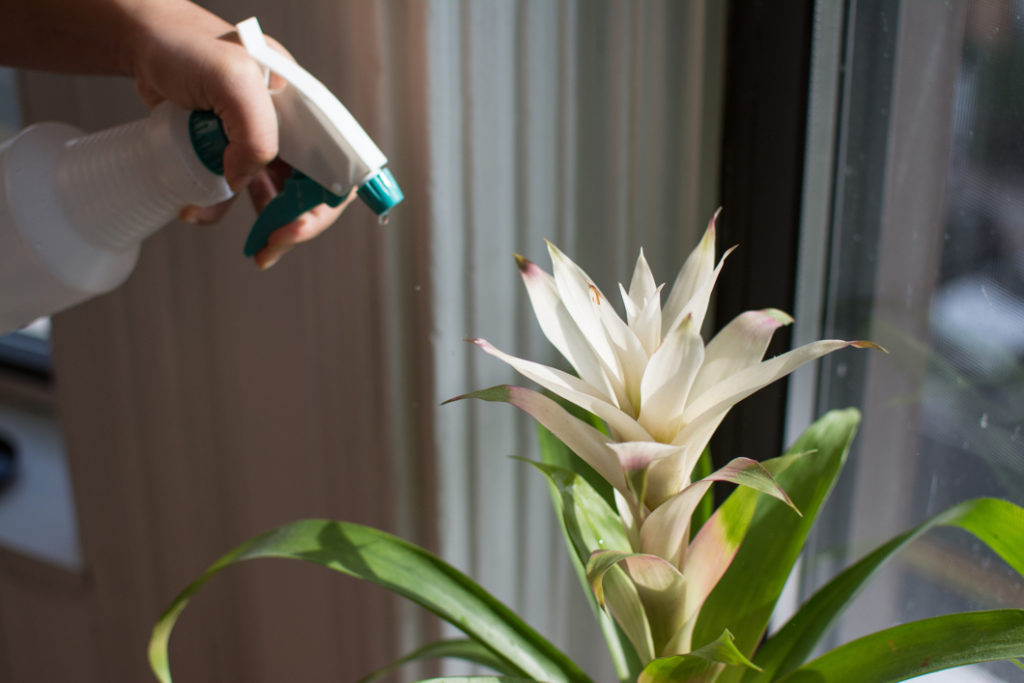
It can be a good idea to mist their leaves or put a humidifier nearby to ensure they stay moist.
Try to ensure they’re still getting 5 hours of daylight per day if possible.
Common Pests & Diseases
Like pretty much every plant, certain pests find bromeliads difficult to resist.
You’ll need to keep your eyes peeled for mealybugs and aphids, both of which like to suck sap from plant tissue.
Uninterrupted feeding can cause make plants look pallid and weak, which can lead to lasting damage.
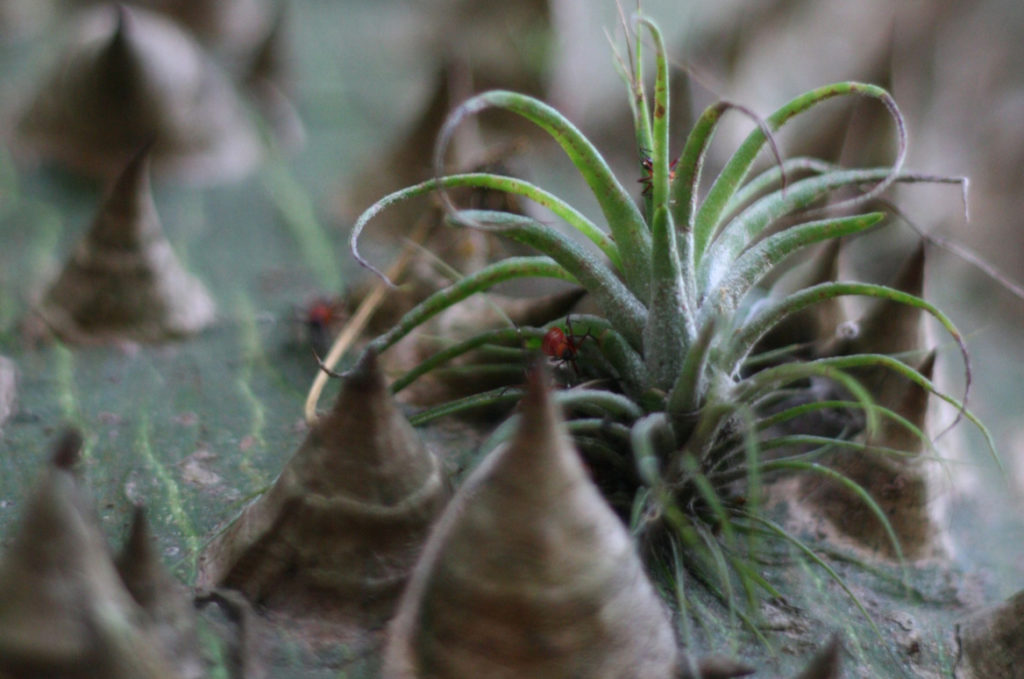
To remove mealybugs and aphids your best first step is vigilance.
Check your plants regularly and remove early visitors by hand.
If you notice repeat visits and you’re finding it difficult to keep them in check, you have a few options:
- Predators like ladybirds which will keep pest populations at bay.
- Sticky traps which will lure the visitors away and kill them.
- Pesticides which are a little more extreme, but are usually quite effective.
Propagation
One of the great things about bromeliads is that they put out pups after they’ve bloomed.
These pups are new plants, ready to be potted and to start their own journey.
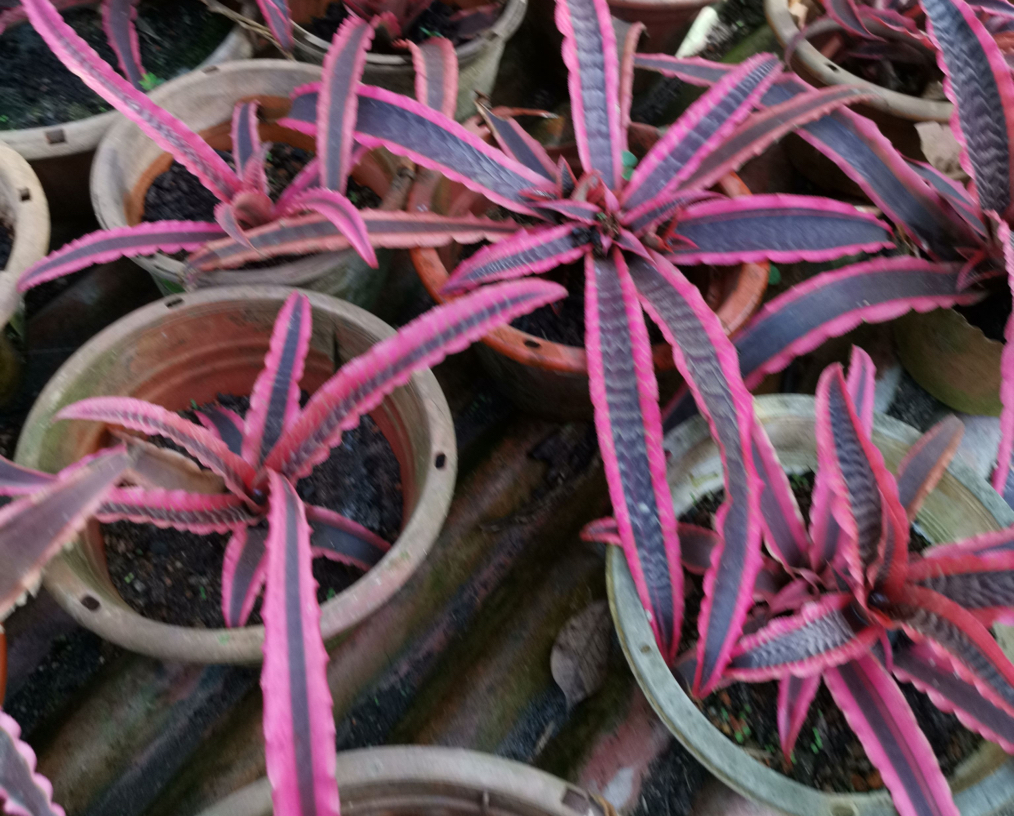
Once you see pups growing from your mother plant, you can remove it with a pruning tool or, if you’re careful, by hand.
Then it’s just a case of potting up the pup in the same conditions as the mother-plant and watching the cycle repeat.
Or, if you like to spread the houseplant love, you can give a pup to a friend!
Potting & Re-Potting
Because bromeliads have a one-bloom lifecycle, there’s not often a need to repot them.
If you do find your plant struggling for space in its pot, repotting is simple.
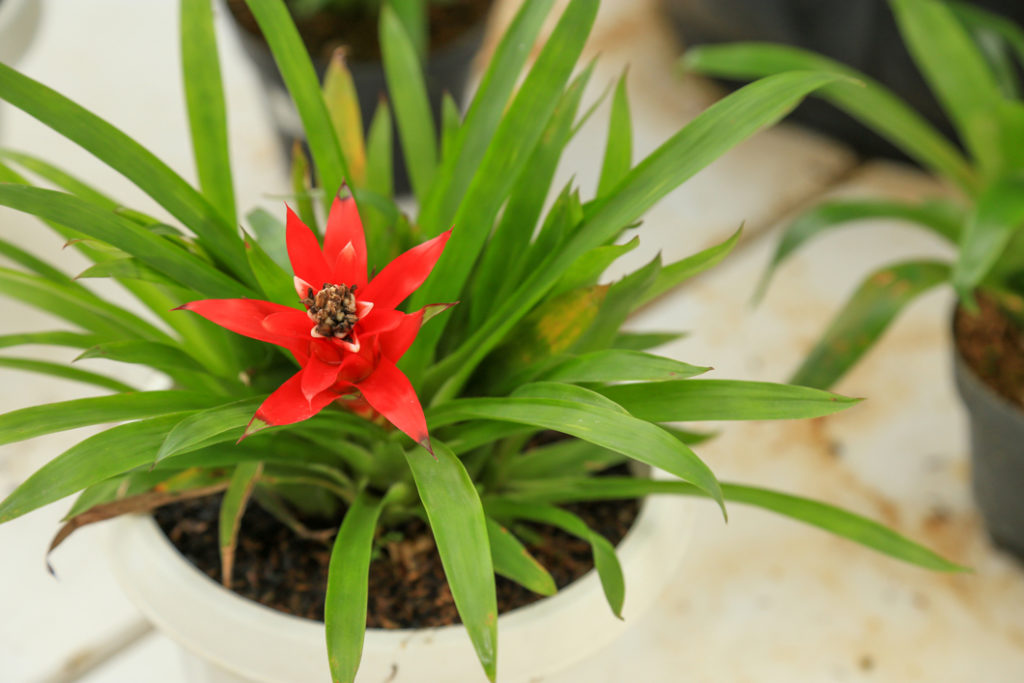
Gently remove the bromeliad from its existing soil and transplant it to soil in a new, bigger pot.
Ensure the top of the soil is level with the top of the new plant, and water right away.
How To Make A Bromeliad Bloom
Keeping your plant in its ideal conditions is the best way to make it bloom.
This means well-drained compost, plenty of water when it’s thirsty and, if the variety requires it, the right amount of fertiliser at the right intervals.
The above is a general guide, and we recommend looking at specific advice for the variety you are growing to ensure the best results.
What Happens When A Bromeliad Bloom Dies?
After the bloom, your bromeliad will begin to produce pups.
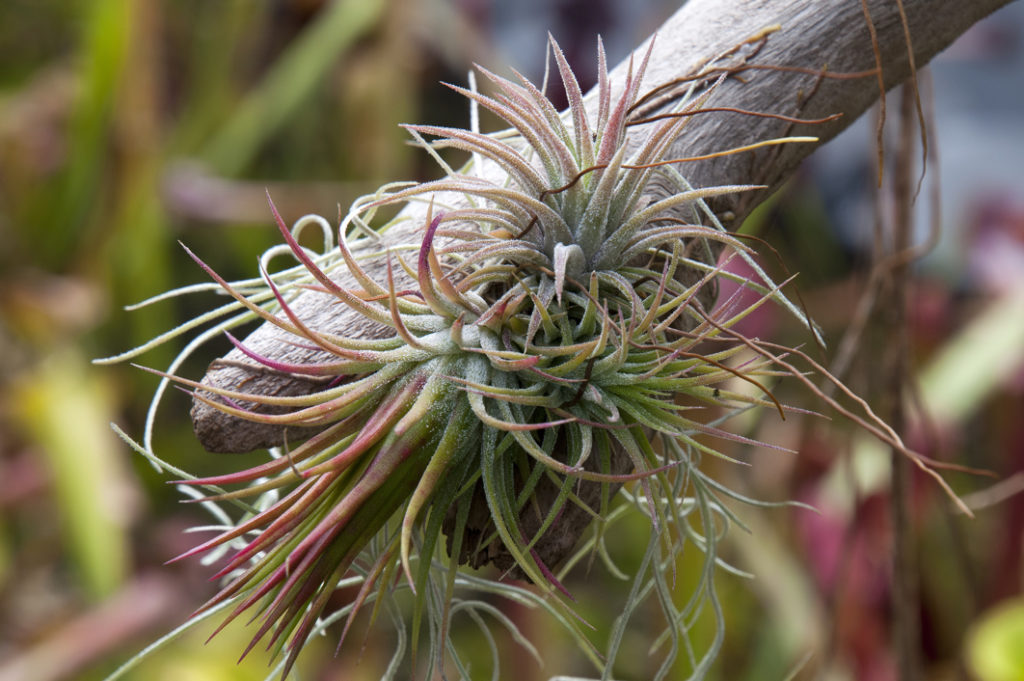
You can either leave the floral bloom to die on the plant or remove it carefully.
Do Bromeliads Only Flower Once?
For most varieties, the answer is yes, although bear in mind bromeliads can stay in bloom for a long time, sometimes up to a year.
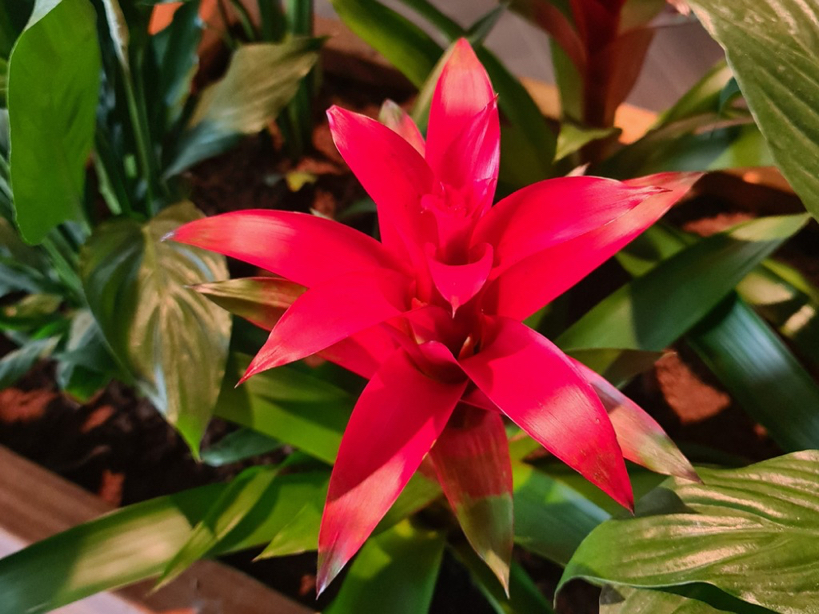
Also remember that you can replant the pups that a mother plant puts out, letting you enjoy an endless series of individual blooms.
References
- 1Bromeliads. (n.d.). Wisconsin Horticulture. Retrieved March 13, 2023, from https://hort.extension.wisc.edu/articles/bromeliads/
